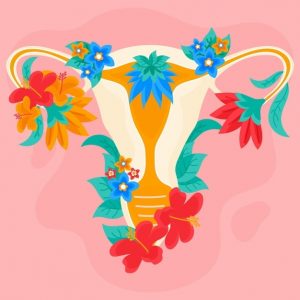Medically reviewed by Sophia Yen, MD, MPH – Written by Pandia Health Editorial Team. Updated March 2, 2021
Birth control and ovarian cysts
While ovarian cysts typically have a negative stigma, they are normal and can heal on their own or with minor treatment. There are multiple interventions that can reduce the likelihood of developing this health condition. The following article will cover the relationship between ovarian cysts and hormonal birth control.
How can birth control prevent ovarian cysts from forming?
Taking hormonal birth control, such as the pill, patch, ring, or IUD, can be an effective method in preventing ovarian cysts from forming.
Combination birth control pills, which contain estrogen and progesterone, are the most effective at blocking ovulation. The mini-pill, which contains only progestin, has an unpredictable effect on ovulation and is, therefore, less effective at preventing cysts from forming.
Individuals who skip their periods while on birth control further decrease their likelihood of developing cysts. To learn more about how to skip your periods using birth control, check out our #PeriodsOptional page.
[thrive_leads id=’18293′]
What is an ovarian cyst?
TL;DR: An ovarian cyst is a bubble of fluid that can be found in or on an ovary (the organ in the female reproductive system that produces eggs).
During the menstrual cycle, the ovaries release an egg in a process called ovulation. In order for this process to occur, a fluid-filled sac, or follicle must develop around the egg. In some cases, this sac grows larger than normal and becomes a cyst.
What symptoms occur if an ovarian cyst is present?
A cyst can grow to around a half-inch to an inch and may even double the size of the ovary. In most cases, the body will reabsorb the fluid from the cyst within a few weeks or months, and the individual will not notice any bodily changes. However, some cysts may lead to unpleasant symptoms, including, but not limited to:
- Abdominal pain and bloating = feeling of fullness or heaviness in your stomach
- Intermittent pelvic pain = on and off pain in your lower abdomen
- Pain or discomfort during bowel movements = difficulty pooping
- Pain or discomfort during sex = more pain than usual while having penetrative sex
If detected early, a cyst can be treated quickly. In some cases, a cyst can keep growing and lead to additional complications. For instance, the growth may lead to ovarian torsion, in which the ovary becomes twisted. An abnormally large cyst may also rupture, or burst, and cause internal bleeding. Symptoms of a problematic cyst include:
- Sudden, severe pain in the pelvis or lower abdomen
- Fever and vomiting
- Dizziness or fainting
If you experience one or more of these symptoms, consult a doctor immediately. They can help determine the best course of action going forward.
What are the different types of ovarian cysts?
The two most common types of cysts are as follows:
Follicular
Halfway through the menstrual cycle, an egg bursts out of its sac, or follicle, and travels down the fallopian tube. In the event that an egg is not released, but the follicle continues to grow, a follicular cyst will form.
Corpus luteum
Once the follicle releases an egg, it becomes a corpus luteum. If fluid accumulates inside, the corpus luteum will grow into a cyst.
Follicular and corpus luteum cysts are benign (non-cancerous) and typically resolve on their own. If they are particularly large, a doctor might opt for monitoring via ultrasound for up to six months to ensure that no further complications occur.
There are a few other types of ovarian cysts that are less common as they are not related to the normal function of an individual’s menstrual cycle:
Dermoids
These contain tissue, such as hair, skin, or teeth, form on embryonic cells during a woman’s reproductive years. Dermoids can also occur on the face, inside the skull, or on the lower back, and can be removed via medical techniques such as surgery. In most cases, they are benign.
Cystadenomas
These develop on the surface of an ovary and are typically filled with a watery or mucus material. In most cases, they go away on their own and do not cause symptoms. However, in the event that they become malignant, they may become painful and require removal.
Endometriomas
These develop as a result of endometriosis, a condition in which endometrial cells grow on areas outside of the uterus such as the ovaries, bowels, and pelvis. Individuals who develop endometriomas may experience symptoms regardless of the size of the actual cyst. Being that these cysts are common in those with endometriosis, birth control may be implemented to slow their growth and, in turn, manage pain.
How are cysts treated?
Thankfully, many cysts resolve on their own without intervention being required. However, those that have grown abnormally large or ruptured may need to be removed in order to relieve the individual of symptoms.
A cyst can be detected via a pelvic exam. Depending on its size and whether it contains fluid, the doctor may recommend further tests in order to determine the best course of action. For instance, an ultrasound may be taken to create an image of the uterus, which can be further analyzed to confirm the presence of a cyst.
If it is determined that a cyst is present, treatment options available will vary based on the severity. In some cases, the doctor may have an individual wait and come back for an exam at a later date to monitor any changes. In the event that a cyst becomes large and causes pain, removal may be necessary. This could occur in the form of laparoscopy, a process in which an instrument is inserted into the abdomen. In some more serious cases, the entire affected ovary may be removed via a surgery called oophorectomy.
While cysts cannot be entirely prevented, an individual may be able to decrease their risk of developing one if they take hormonal birth control. As ovarian cysts form during the process of ovulation, stopping this process can reduce the likelihood that a cyst will form. With that said, birth control should not be used as a means to shrink a cyst that is already present.
Is the presence of ovarian cysts always an indicator of PCOS?
Polycystic Ovarian Syndrome (PCOS) is a hormonal condition that affects women of child-bearing age. The word “polycystic” means “many cysts” – individuals with PCOS develop many fluid-filled sacs inside their ovaries. There are several symptoms associated with the disorder, including, but not limited to, irregular periods, acne, weight gain, and headaches.
With all of that being said, having ovarian cysts alone is not an indicator of PCOS. However, if additional symptoms are present, the affected individual should consult a doctor. They may order a blood test or pelvic examination to determine whether or not PCOS is the underlying issue.
Are ovarian cysts cancerous?
Many ovarian cysts are benign, but some can be cancerous. Cancerous cysts are more common in older, post-menopausal women.
All cysts should be checked by a doctor. If they find a cyst to be cancerous, they may refer you to a gynecologic cancer specialist. In some cases, a total hysterectomy (removal of the uterus, ovaries, and fallopian tubes) may be necessary.
[thrive_leads id=’18293′]
Who is most at risk of getting ovarian cysts?
Individuals with uteruses who have regular periods are at the highest risk for getting ovarian cysts. The majority of those who menstruate every month will form at least one follicle or corpus luteum each month during ovulation. For this reason, skipping periods using birth control will reduce the likelihood of developing ovarian cysts.
Most cysts do not cause any symptoms and may not even be noticed by the affected individual. The cyst becomes problematic if it grows large enough to cause pain and other unpleasant symptoms. Thankfully, only around 8% of women who ovulate regularly will have developed a cyst that causes complications. For postmenopausal women — women who have not gotten their period in over a year — an ovarian cyst is a risk factor for cancer.
What’s the takeaway?
While many ovarian cysts will not lead to further complications, it’s important to consult a doctor if you notice abnormal symptoms. Thankfully, ovarian cysts can be resolved quickly once they’ve been identified. If you develop an ovarian cyst, know that it is normal and common!
How can Pandia Health help?
Did you know that hormonal birth control has other health benefits, in addition to preventing pregnancy and reducing the risk of ovarian cysts developing? Using birth control pills for at least five years can lower an individual’s risk of developing ovarian cancer by up to 40%, even if there is a family history. Birth control can also lower the risk of developing endometrial cancer.
At Pandia Health, believe people who ovulate should have the choice to have ultimate control over their reproductive systems. Stopping your periods completely with #PeriodsOptional can be incredibly beneficial for both a person’s mental and physical health.
To explore how birth control can be beneficial to you and to find a type of birth control that aligns with your needs and lifestyle, sign up with Pandia Health today! With just one $25 payment a year, you can get access to our expert doctors (available in these states) for 364 days.
Disclaimer: The views expressed in this article intend to inform and induce conversation. They are the views of the author and do not necessarily represent the views of Pandia Health, and are for informational purposes only, even if and to the extent that this article features the advice of physicians and medical practitioners. This article is not, nor is it intended to be, a substitute for professional medical advice, diagnosis, or treatment and should never be relied upon for specific medical advice.





